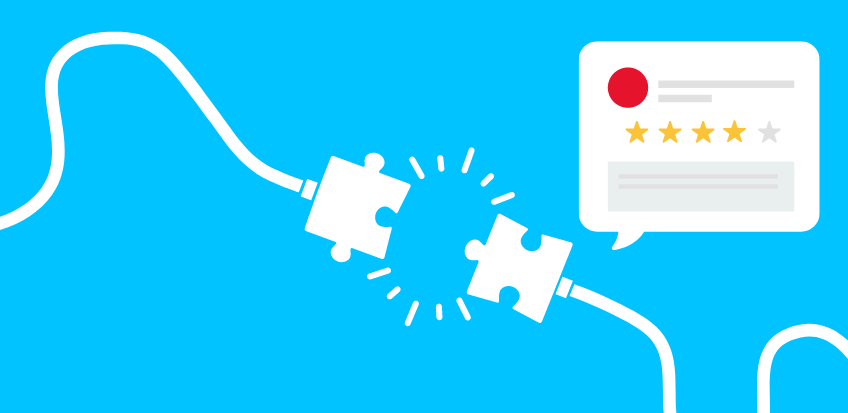Customer Feedback: Your Secret Weapon
Imagine this: You’re at the helm of your litigation support service business, navigating the competitive legal landscape. What’s your compass? Customer feedback. It’s the heartbeat of your brand, revealing exactly what your clients think about your services—no guesswork required.
Now, gathering insights from your customers is faster, easier, and more impactful than ever. We’ve compiled some of the most effective ways to collect and manage feedback, so you can stay in tune with your customers and lead your law firm clients to success.
Why Does Customer Feedback Matter?
Think of customer feedback as a treasure map. Successful businesses have been using it to chart their course for centuries—literally. Want proof? Let’s rewind to 1750 BC when the first recorded customer complaint was etched in clay:
 | Dear Ea-nasir,
Your copper was junk. We’re not accepting it. I want my money back. Sincerely, Nanni P.S. Your warehouse people were rude to my driver. |
Sound familiar? Aside from the clay tablets, not much has changed. Today, customer feedback still holds the power to make or break your business—only now, it travels at the speed of light.
How to Get Customer Feedback
There are two main ways to gather customer feedback: the passive approach and the active approach. Here’s a breakdown of each:
Passive Methods:
- Monitoring Online Reviews: See what people are saying without directly asking.
- Tracking Social Media Mentions: Get a feel for customer sentiment through their social chatter.
- Analyzing User Behavior on Your Website: Let their clicks and visits tell the story.
Pro Tip: Passive feedback often uncovers unexpected insights—those things customers wouldn’t think to mention in a survey.
Active Methods:
- Surveys: Ask specific questions to get targeted answers.
- Interviews: Dive deep into customer experiences.
- Feedback Forms: Place them directly within your product or service.
- Focus Groups: Gather real-time reactions and opinions.
Pro Tip: While active feedback gives you control over the questions, remember that responses might be more polished since customers know they’re being asked.
Why Use Both?
The best feedback strategies blend both methods, giving you a full picture of what’s working and what needs tweaking.
Quantitative vs. Qualitative Feedback
Feedback comes in two flavors: numbers-driven (quantitative) and story-driven (qualitative). Knowing when to use each can make a big difference.
Quantitative Feedback:
Use this when you want hard data—like customer satisfaction scores or the frequency of orders. For example, you might ask, “How satisfied are you with our process serving, on a scale of 1 to 5?”
Qualitative Feedback:
This is your go-to for understanding the “why” behind the numbers. Questions like, “What’s the most valuable feature of our eFiling service?” can reveal deeper insights into your customers’ experiences.
Keep It Simple
You don’t need fancy tools to collect valuable feedback. Sometimes, a simple call log in an Excel sheet can do the trick. But if you’re ready to step it up, there are plenty of software options like Podium, Qualaroo, and Survey Monkey that can streamline the process.
Turning Feedback into Action
So, you’ve gathered your feedback—now what? Time to analyze it, see what it’s telling you, and take action. Whether it’s fixing a bug, improving customer retention, or innovating a new product, your next move should always be guided by what your customers are saying.
A successful California-based litigation support service owner stresses the importance of acting on every piece of customer feedback. His simple rule:
“Customer feedback always merits action.”
However, the extent of that action depends on the frequency and scale of the issue.
Sometimes, it’s enough for a support team member to reflect on what could have improved the customer experience—like listening longer or being more patient during a call. This low-cost, low-involvement action can make a difference.
Other feedback demands more significant action, such as mobilizing an internal team, changing a process, or modifying a product.
The owner adds another key principle:
“Saying, ‘This problem happens all the time,’ isn’t a basis for action.”
To avoid overreacting, he advises asking for data that shows the scale and frequency of the issue.
“When your employee raises a concern, one of the first steps is to request data that illustrates the problem. Use that data to remove guesswork from your response.”
Is All Feedback Equal?
Not all feedback is created equal—especially in the litigation support world. Law firms, for example, typically have a deeper understanding of your services compared to non-law firm customers. Their feedback might be more objective, but that doesn’t mean you should ignore the insights from those outside the legal profession. Every voice counts.
Follow the Outcomes
Customer feedback isn’t just about gathering data—it’s about making real changes that elevate your business. For instance, if you discover that long wait times are frustrating your clients, take action! By staggering lunch breaks and adding a chatbot, you could see satisfaction scores soar.
The Road Ahead
In the past, businesses relied on gut instinct and the occasional ear-to-the-ground moment to make decisions. Today, customer feedback is the gold standard. It’s the quickest way to transform your business into a top performer.
Ready to level up your customer experience? At LegalConnect, we’re here to help you turn feedback into your most valuable asset. Call (800) 909-6859 for a demo or contact support@legalconnect.com for more information—because the best journeys start with the right guide.
